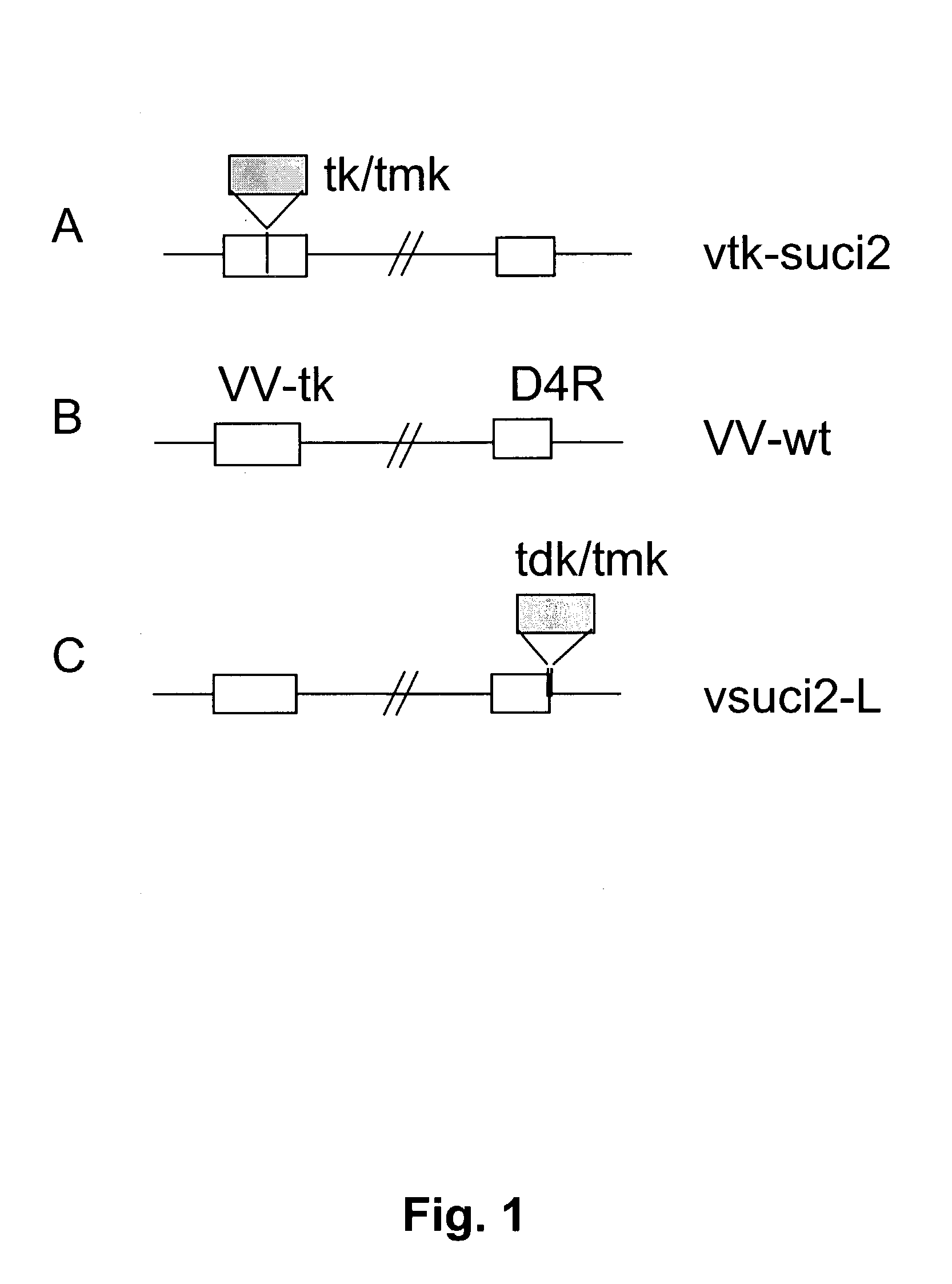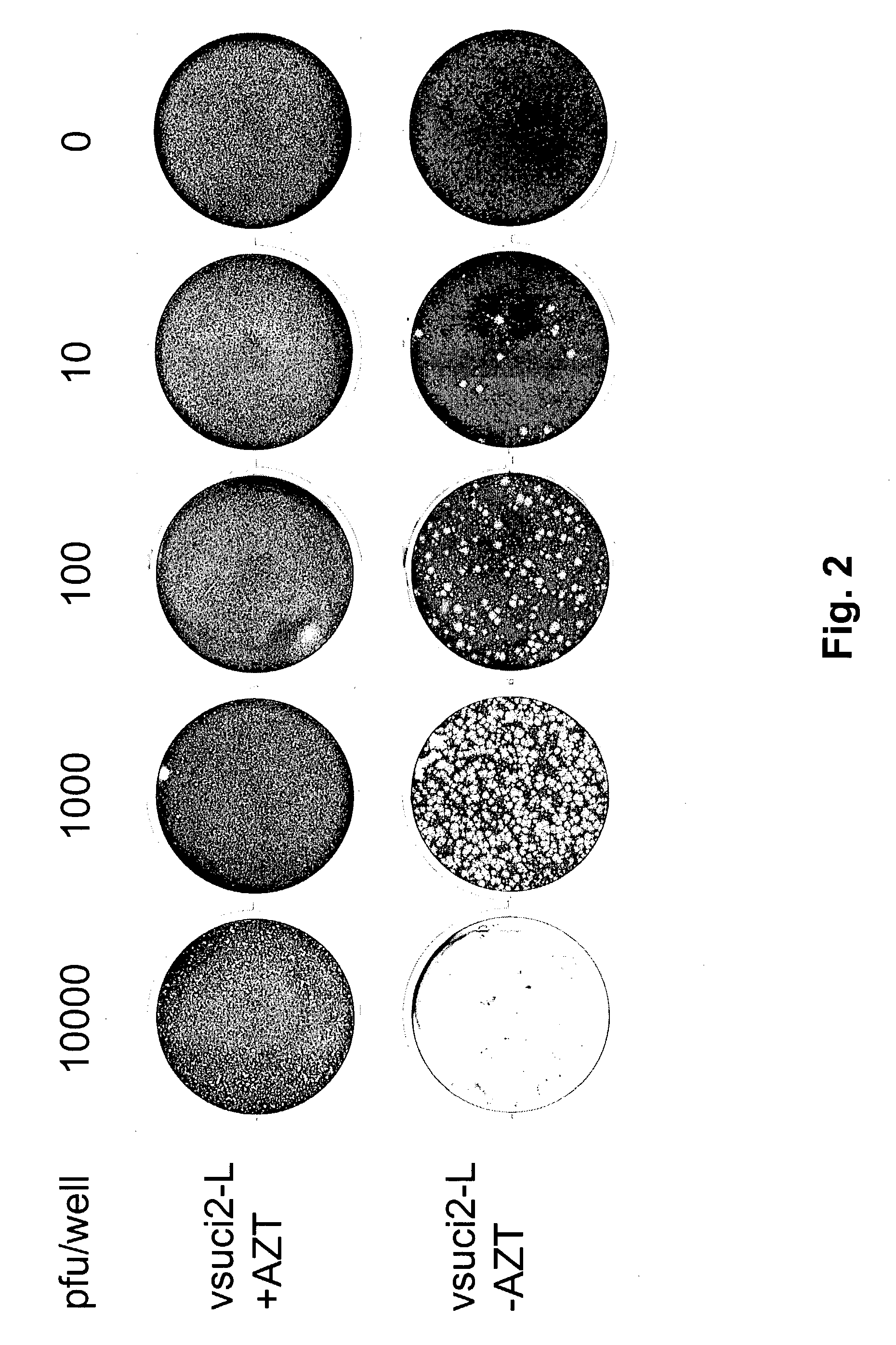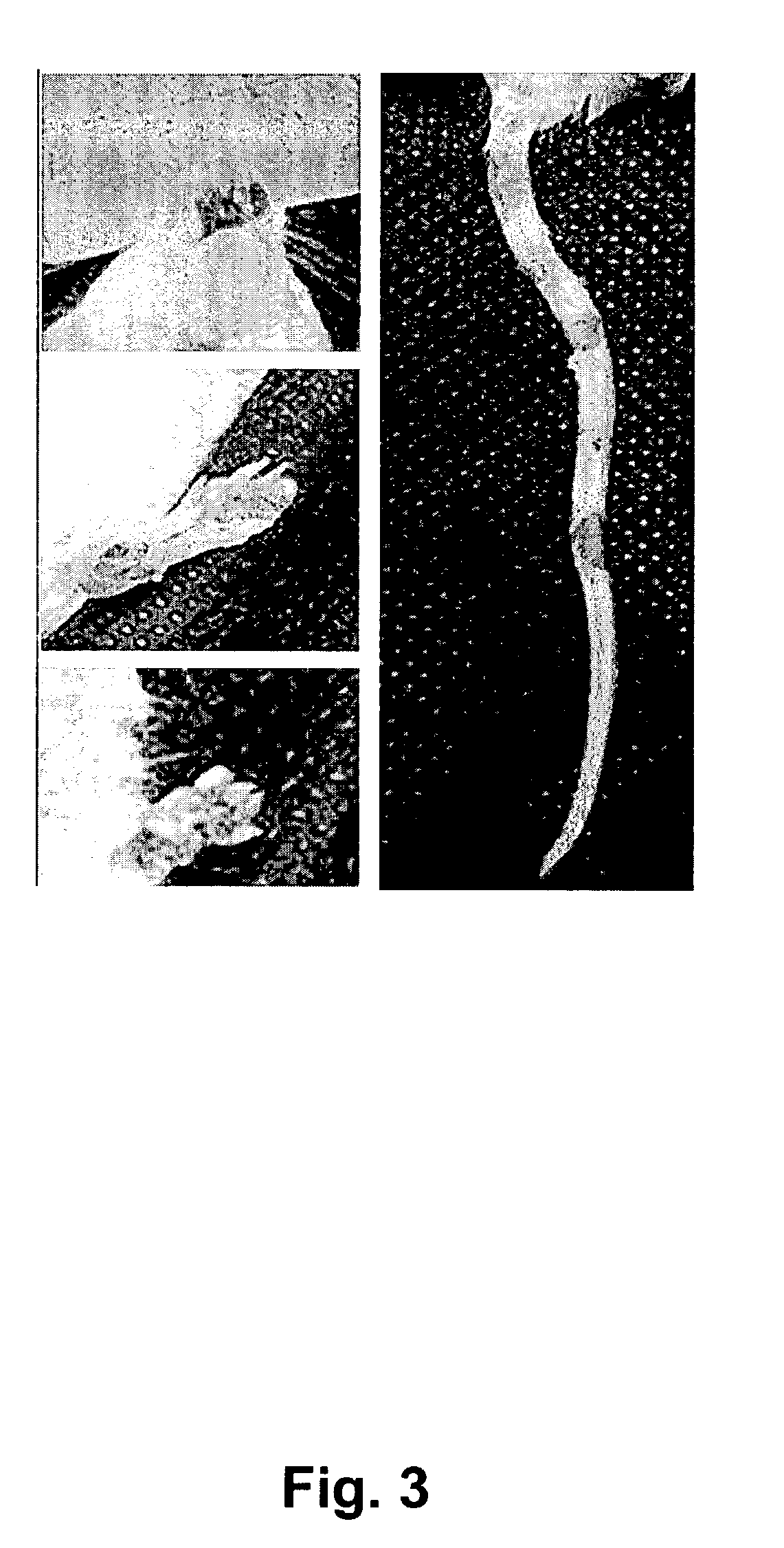Modified poxviruses, including modified smallpox virus vaccine based on recombinant drug-sensitive vaccinia virus, and new selection methods
a technology of poxvirus and recombinant drug-sensitive vaccinia virus, which is applied in the field of modified poxviruses, can solve the problems of large skin areas usually being affected, hiv/aids, and the risk of progressive vaccinia of the conventional smallpox vaccine,
- Summary
- Abstract
- Description
- Claims
- Application Information
AI Technical Summary
Problems solved by technology
Method used
Image
Examples
example 2
[0073] A) Inhibition of plaque formation in cell culture by AZT. Plaque formation of the candidate virus is strongly inhibited by AZT on the standard cell line CV-1 (FIG. 2). Cells were grown to confluency, infected with the indicated amount of virus per well and incubated in the presence (upper row) or absence of AZT. After three days, cells were stained with crystal violet. At the highest dose of 10,000 pfu per well, all cells were lysed without AZT (first well lower row), while in the presence of AZT only minor lesions were detectable. The extent of inhibition was in a similar range in rabbit kidney cells. The therapeutic window of AZT concentrations was between 0.25 to 1 mg / ml. In this concentration range, the virus is strongly inhibited while host cells were not visibly affected.
[0074] B) Inhibition of the AZT-sensitive vaccinia virus in SCID mice and treatment of generalized vaccinia. An important parameter to investigate is the in vivo inhibition of the prototype vaccine in a...
example 3
Construction of a Candidate Smallpox Vaccine Based on the New York City Board of Health (NYCBH) Strain
[0078] An AZT-sensitive vaccinia virus based on NYCBH strain is desirable because this strain is one of most successfully used smallpox vaccines during the era of smallpox eradication. The plasmid pDD4.4-suzi2-ZG is used to construct the virus v-AZTs-NYCBH strain by standard recombination procedures. All manipulations requiring virus growth are performed in a serum-free Vero cell line (VeroSF) approved for vaccine production, adapting the calf-lymph derived Dryvax vaccine to growth in the permanent cell line. See U.S. Pat. No. 6,146,873. Recombination, plaque purification and production is done in this cell line ensuring freedom from adventitious agents, in particular bovine viruses and BSE. This procedure ensures maximum product safety and excellent growth of candidate vaccine in the production cell line.
[0079] pDD4.4-suzi2-ZG. A 4.7 kb SnaBI / Not fragment containing a transient lac...
example 4
[0081] The new recombinant vaccinia comprising a gene encoding a prodrug converting polypeptide also allows for a new selection method, an efficient negative selection protocol could be established even for vaccinia recombinants that are otherwise difficult to isolate, and where classical vaccinia tk selection is not possible. The novel E. coli tk / tmk marker provides stringent selection and shows a low frequency of escape mutants, allowing for rapid isolation of recombinants starting with a tk / tmk-positive parental virus. A schematic drawing of the selection procedure and the construction is presented in FIGS. 4 and 5.
PUM
| Property | Measurement | Unit |
|---|---|---|
| Fraction | aaaaa | aaaaa |
| Fraction | aaaaa | aaaaa |
| Fraction | aaaaa | aaaaa |
Abstract
Description
Claims
Application Information
 Login to View More
Login to View More - R&D
- Intellectual Property
- Life Sciences
- Materials
- Tech Scout
- Unparalleled Data Quality
- Higher Quality Content
- 60% Fewer Hallucinations
Browse by: Latest US Patents, China's latest patents, Technical Efficacy Thesaurus, Application Domain, Technology Topic, Popular Technical Reports.
© 2025 PatSnap. All rights reserved.Legal|Privacy policy|Modern Slavery Act Transparency Statement|Sitemap|About US| Contact US: help@patsnap.com



